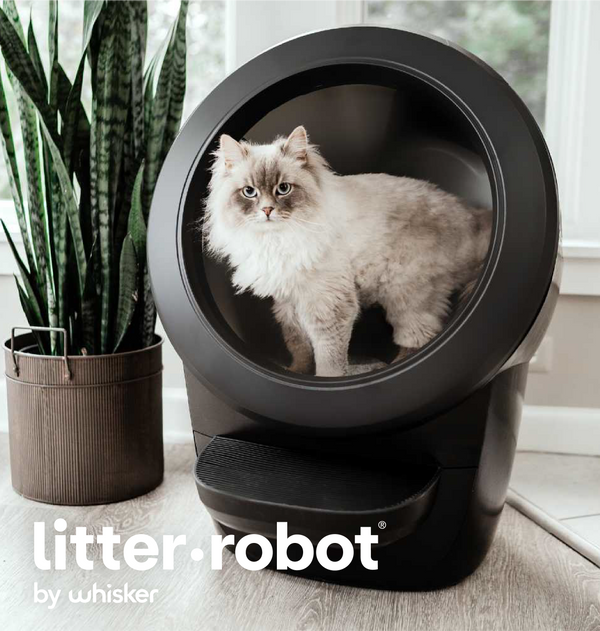Cat Scratchers - Why Your Cat Needs One, Plus Tips!
The answer is yes, cats need to scratch, and the best thing you can do about it if your cat is always inside, is to provide them with scratchers, like a scratch post. Aside from being important for your cat, having scratchers can also save your furniture, walls, and other household items from being scratched instead. First, let’s dive into why cats scratch.
The scratching instinct
Scratching is a fundamental part of a cat's behavioural repertoire. It is a natural, instinctive behaviour that fulfills several essential functions. Understanding why cats scratch can help pet owners provide appropriate outlets for this behaviour, minimising damage to household items and ensuring the cat's physical and mental well-being.
At its most basic, scratching serves a critical role in a cat's physical health and comfort. When a cat scratches, it engages in a full-body stretch, from the tips of its back claws right up through the tendons and muscles to the front claws. This activity helps keep the cat's body lithe and agile, contributing to overall muscle tone and flexibility. Just like we might stretch and flex our muscles to relieve tension or stiffness, so too do cats through scratching.
Scratching is also integral to maintaining the health of a cat's claws. When a cat scratches, it helps to remove the outer nail sheath, revealing the sharp, smooth claws beneath. This exfoliation process is a necessary part of claw health, keeping the claws sharp and the cat's paws in good condition. Without regular scratching, a cat's nails can become overly long, potentially leading to discomfort and various health issues.
Scratching to send a message
But scratching isn't just a physical activity—it's a form of communication too. Cats have scent glands in their paws, and when they scratch, they leave behind both a visual marker and a unique olfactory signature. This scent marking plays a crucial role in a cat's communication with other cats. It's a way for them to signal their presence, establish territory, and indicate factors like their reproductive status and general health. It's essentially their way of saying, "I was here."
For a pet cat living in a home with humans, this communication might seem unnecessary. But for the cat, it's a deeply ingrained instinctual behaviour. They're not scratching your furniture to be destructive or spiteful—they're simply doing what cats have been programmed to do through thousands of years of evolution.
In the wild, cats might scratch prominent trees or other notable landmarks to signal their presence to other cats. In a home, that prominent landmark might unfortunately end up being your favourite couch or a valuable piece of furniture. This is why it's important to provide your cat with suitable alternatives, like scratching posts or boards, which can satisfy their instinctual need to scratch.
In conclusion, scratching is an essential and complex behaviour that serves multiple functions for a cat. From physical health maintenance and exercise to communication and territory marking, scratching is much more than a destructive habit—it's a key aspect of being a cat. Understanding this can help cat owners better meet their pets' needs and foster a more harmonious cohabitation.
Now that we understand the importance of why cats scratch, it is clear that providing them with a preferred place to scratch is a good idea for all involved. The question now is, how do you choose the right scratch post? Here are some differences that can be taken into account.
Texture
It helps to identify what texture your cat likes. Specifically, what her or his claws dig into. Some of the surfaces you can choose from include sisal, corrugated cardboard, fibrous rope, or soft carpet. Different cats prefer a different texture.
Height
Scratch posts have different designs and heights. We recommend that you consider choosing a scratch post that’s taller than your cat so that they can stretch their body as they dig in their claws.
Angle
As you observe your cat move, stretch, and scratch, you can see that they choose a specific angle to do these things. Think of this when buying a cat post tool.
If your cat is standing on her hind legs to scratch, then she’d love a stand-up or wall mounted post. If your cat likes to scratch the carpet, then a floor scratchpad is what your cat may need.
Stability
Always make sure that the post or pad you choose is stable. Standing posts should be durable enough to be able to hold your pet’s weight while it’s in an upright position.
Placement
You should place the new post near an object where your cat has already scratched. Cats often scratch at a particular place for a reason we do not understand. Placing a scratch post in a similar position can encourage your cat to choose the post as its favourite scratching place. You can also lure your pet to it by applying a catnip spray or something similar on the post.
Once your cat is already acquainted with the post, you can now move it to an accessible location. However, don’t move it too far away because they’ll still want to stay close to their favourite scratching area of the home. If you’re looking for other toys, you can also help your cat by getting them a ball toy to sink their claws into.
Get in touch
Got a question or a comment? Contact us today—we love to hear from our customers.





















